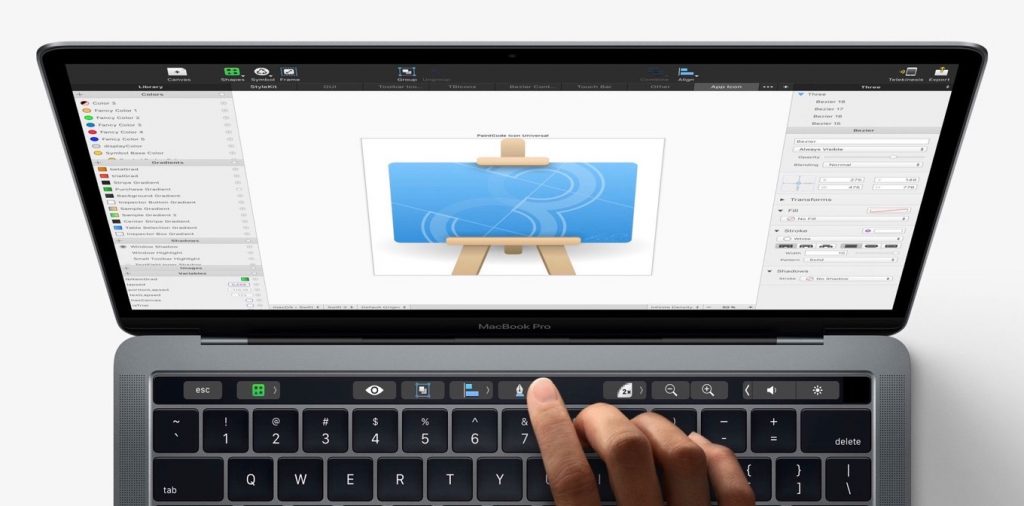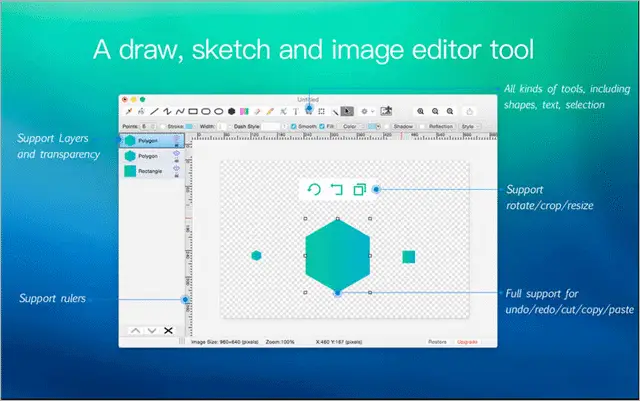

- #MACBOOK IOS PAINTCODE HOW TO#
- #MACBOOK IOS PAINTCODE UPDATE#
- #MACBOOK IOS PAINTCODE CODE#
- #MACBOOK IOS PAINTCODE DOWNLOAD#
The widget view has a placeholder method where you can hard code data that will show up in the preview when a user is about to add your widget to their home screen.īe sure to wire up the widget in your existing app by adding the AdditionalAppExtensions section to your app. Xcode is pretty cool in that you have a PreviewProvider, and you can make changes to your code and view an instant preview right inside Xcode. Once you open the “TestNativeApp” solution in Xcode, you’ll be able to modify the existing widget, NativeWidget.swift and run it in the simulator. I simply copied the “SwiftExtension” folder from this sample and pasted it in to my apps repo. This repo has a sample Xamarin Forms app, a blank shell iOS app, and a Widget project.
#MACBOOK IOS PAINTCODE DOWNLOAD#
What I did, and what I highly recommend, is just download the sample “ xamarin-ios-swift-extension” GitHub repo. After a short Pluralsight course and some YouTube videos I managed to get the hang of Swift and SwiftUI for building something simple. Now comes the fun part, building your new widgets! Unfortunately you will have to build these widgets in Swift and SwiftUI in Xcode. A native Xcode shell app with a Widget Extension target, written in SwiftUI

#MACBOOK IOS PAINTCODE UPDATE#
You should also re-download your existing apps Provisioning Profile as it will be updated now with the App Group.ĭon’t forgot to now update your Entitlements files with an -groups key for this new App Group, for both the main app and widget. I would now go to Profiles and create a new “My App Widget” profile for App Store distribution, choosing the “My App Widget” App ID. Once done, you should now go and update your existing apps App ID “My App” to also associate the newly created App Group. Make sure you also associate the newly create App Group to this App ID on this page. Say your app’s bundle ID is, then your widgets bundle ID can be. The bundle ID for the widget should start with the bundle ID of your main app. Say your app is called “My App”, I am calling my widget “My App Widget”. Go back to Identifiers, click the + button and add a new App ID for your widget. The identifier will start with group, say the bundle ID of your main app is, then your App Groups identifier can be. Say your app is called “My App”, I am calling my App Group “My App App Group”.

Once you’re in the Apple Developer portal, go to Identifiers, click the + button, and add a new App Group.
#MACBOOK IOS PAINTCODE HOW TO#
We’ll discuss how to talk between the app and widget later on. If you don’t plan on doing that you might be able to skip this, but I would highly recommend creating an App Group anyway. The reason why you should create an App Group is because this will allow you to talk between your app and the widget. Creating an App Group, an App Identifier, and then a Provisioning Profile for your widget (and update the existing provisioning of your existing app) Therefore it needs its own App Identifier and Provisioning Profile in the Apple Developer portal. Meaning the widget has to be developed and built independently (especially in Xamarin’s case). Think of an iOS 14 Widget as a standalone, self contained app, not too dissimilar to a standalone watchOS app. Provisioning Profiles, App Identifiers and App Groups Building your app in Visual Studio App Center ready for distribution.Communicating between your app and the widget, and talking to the internet with JSON deserialization.A native Xcode shell app with a Widget Extension target, written in SwiftUI.Provisioning Profiles, App Identifiers and App Groups.To build and bundle widgets in a Xamarin Forms app, I will break down this blog post in these 4 steps: The Microsoft team did a good job with the Embedded WidgetKit Support to make this possible, however there are some little quirks and secrets I discovered along the way in adding iOS 14 Widgets to my app. What’s even better news for Xamarin developers is that you can add native iOS 14 widgets, albeit written in Swift and SwiftUI, to your app today. This is great news if your app can benefit from the addition of widgets. Image from Apple’s iOS 14 page, with my weather app swapped inĪs you probably know, Apple’s latest iOS 14 and iPadOS 14 introduced the ability for developers to add widgets to their home screens.


 0 kommentar(er)
0 kommentar(er)
